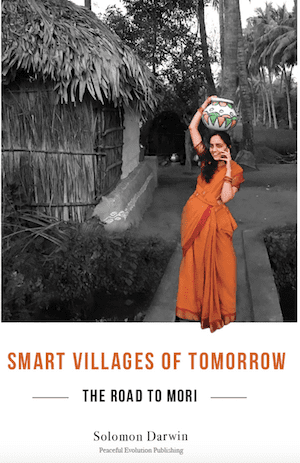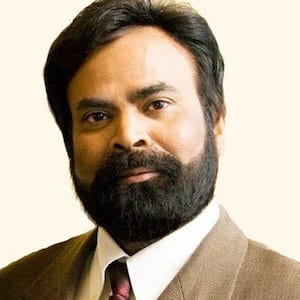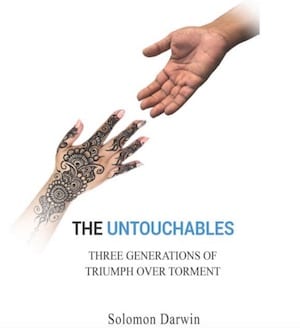Solomon Darwin, the executive director of the Garwood Center for Corporate Innovation, has just published two new books, The Road to Mori: Smart Villages of Tomorrow and The Untouchables: Three Generations of Triumph Over Torment.
The first book is a case study about the modernization efforts underway in his hometown of Mori, a village of 8,000 people in southeastern India; the second is a memoir of how three generations of his family overcame their status as members of India’s lowest caste. We recently spoke to him about both efforts.

Q: How would you describe the Smart Villages movement, and Mori’s role in it?
A: Smart Villages are not about building infrastructure, roads, buildings, water tanks, and public toilets. They are about empowering people with digital technologies so they can access global markets. They are about using the concept of open innovation that my friend and colleague Henry Chesbrough pioneered to share ideas that build ecosystems where everyone benefits. In early 2016, the Garwood Center, UC Berkeley, and Mori’s regional government partnered to build a scalable prototype of a smart village in Mori. I think of Mori as more of an idea, or a mindset, than a place.
Q: In your books, you tell two very powerful, closely related stories. Why now?

A: One book actually inspired the other. We’ve accomplished enough in Mori that I wanted to share our successes and lessons and help corporate executives understand that 3.4 billion poor people are a big market opportunity. As I was writing that story, I got inspired to write about my family. I was born in Mori as an Untouchable, which is the lowest social caste in India and usually means a life of extreme hardship. But my grandmother was very entrepreneurial and built a number of thriving global businesses without the benefit of technology. My father also rose above the narrow constraints of our caste to earn a PhD in biology and become an American university professor. As a teenager, I went to college in the U.S. with the equivalent of a fifth-grade education. This is a story I’ve long been encouraged to tell, and there are echoes of my family’s struggles and successes in what’s happening in Mori.
Q: What is happening in Mori, and how is technology changing villagers’ lives?
A: The Mori Smart Village started with Internet connectivity. We just marked the two-year anniversary of the day that I, literally, flipped the switch that brought Internet access to every home. The good news is, people were streaming YouTube videos live, buying goods, and transferring money within an hour. The bad news is there isn’t enough bandwidth to handle all of the traffic. We’re working to fix that. We knew people were hungry for the Internet, but we didn’t realize they were starving for it.
Today, we have 22 corporate partners from around the world, including Google, PayPal, Ericsson, Dell-EMC, Wipro, Hella, and Hitachi bringing services to Mori. PayPal, for example, has developed the Digital Mall, where residents can open a bank account and get paid for their work when selling online. Before, there was no easy way to use a bank, but now a simple digital and mobile solution is beginning to create a thriving economy.

Q: Are there other important lessons?
A: I’m discovering that startups have a big role to play. Large companies tend to be more reluctant to adapt their technologies and business model to the rural emerging markets. Startups can move faster and they have very progressive products and services that have a great match for the villagers, like New Sun Road, a company founded by two Berkeley graduates that is working to bring electricity and the Internet to remote villages. My team just wrote a proposal to India’s Prime Minister Narenda Modi encouraging his government to invest in startups.
Q: You write a lot about the importance of using Smart Villages to make villagers happier, not just better off financially.
A: Mori had one of the highest suicide rates among farmers in India. Since the farmers don’t own their land, they are slaves to their landlords. They are also debtors to the companies that sell them seeds, fertilizer, pesticides, and water. If companies, instead of working in silos and squeezing farmers, can work together as one ecosystem and create one distribution channel, they benefit and the farmers benefit. Costs are eliminated, time is saved, and speed-to-market improves. The farmer is happier. The Smart Village movement is raising the happiness index—not just raising standards of living.
Q: What’s next for Smart Villages?
A: We’re working to bring the Smart Village concept to 455 villages in the state of Andhra Pradesh, which is where Mori is, and to another state near the Himalayas. We’re still in experimental stages of figuring out what works and what doesn’t. But there are 650,000 villages in India. To scale this, we just started working with several companies to develop a publicly available online platform where villagers, researchers, startups, global firms, government entities, and entrepreneurs come together to develop digital solutions. This process provides an open innovation process to test and scale solutions co-innovated by the whole ecosystem. The process also allows many half-baked technologies to completion that empowers people. The data-rich Smart Village platform will help generate new insights to posted challenges to solve them rapidly in a cost-effective and affordable fashion.
Nine universities, including Berkeley, MIT, Oxford, Cambridge, and Aachen, have just signed up to participate, along with 80 corporations.